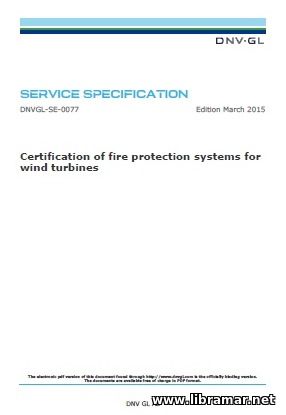 We may all observe the steady and rapid growth of the wind energy industry during the recent years. This relates not only the total number of constructed and installed wind turbines but also to the individual rating and level of sophistication of the wind turbine technology.
The expansion to offshore regions will definitely further drive the development of this technology and increase the investment level. Taking this background into consideration, the demand for reliable and effective protection of the systems and also the investments have significantly grown. It goes without saying that the effective and reliable fire protection system substantially contributes in the risk reduction. Reliable and effective operation of the FPS (fire protection systems), considering both active/passive measures, facilitate the reduction of the risk of bodily injury as well as of damage to the property that may be caused by fires in wind turbines. These systems may even be capable of preventing the total loss of turbine.
This service specification by DNV GL class society is aimed to define and ensure a high quality model for both design and construction of modern fire protection systems. This document will be subjected to frequent revisions in accordance with experiences, new findings in the area and all future technological developments. The authors are intending to set up a common technical basis of understanding for makers of fire protection components and complete FPS with regard to high quality, reliability and operational effectiveness of the products.
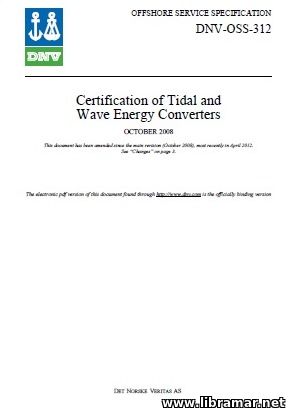 The DNV OSS is intended to present procedures and principles for the certification of tidal and wave energy converters conducted by DNV classification society. Such converters, when installed either inshore or offshore, will obviously face same environmental challenges as the converters installed on the offshore oil and gas installations. This class society will use its experience from the offshore industry to develop necessary guidance for the renewable energy installations.
That is why the reference is given to the DNV offshore standards/recommended practices and international standards. The document covers all concepts of tidal and wave energy converters and refers primarily to the near-shore and offshore concepts for such converters; however, it may also be applied to the shoreline devices. Generally, converters may be of floating or fixed types and they are usually constructed of steel, concrete or composite material.
This OSS is flexible enough to match the differences in technology and new concepts that are currently being developed, and provides a framework for proper application of the certification to the marine renewable energy. The publication contains definitions and references, safety philosophy, certification deliverables, explains the basic principles of certification as well as qualification of new technology, procedures to be followed for assignment of certification, verification of procured items, documentation and many other issues.
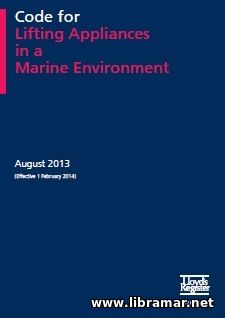 Nowadays, almost all of the national maritime authorities require that the lifting appliances installed on board ships must be approved, examined, tested and subsequently certified by the person or organization considered competent, prior to putting them into actual service.
The certification provided by Lloyd's Register classification society is internationally recognized and worldwide accepted and respected. As a result, Lloyd's Register may undertake all necessary certification as well as subsequent periodical inspections in order to ensure compliance of the shipboard lifting appliances with applicable requirements of all relevant statutory instruments. Ships and/or offshore installations having the lifting appliances that have been constructed and tested in compliance with the structural as well as machinery requirements listed in the present LR Code, may be assigned the Special Features classification notations by LR.
This document shall apply to all marine and offshore lifting appliances, including cranes, derrick crane systems, ramps and lifts, launch and recovery systems, etc. It shall also apply to ship lift and transfer system installations used to raise and lower the ships using their winches/jacks. The appliances that have not been mentioned above should be treated on the general basis of the present document.
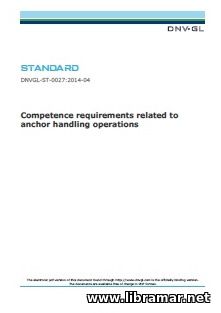 The present DNV GL standard has been specifically aimed to cover all operational aspects on board AH tugs. The OOW, i.e. officer on watch, will manage all anchor handling and towing operations on board, including their planning and preparation, ship management, bridge watchkeeping and shiphandling.
No any distinction was made between Watchkeeping Officer and Master. Dynamic positioning (Joystick-mode) has been considered an integral part of the competencies of the person acting as OOW. It is not specifically addressed in this standard but covered in the standard DNVGL-ST-0023 Competence of dynamic positioning operators - Notation AJ/S.
The Winch Operator must, in close cooperation with the OOW, be able to perform all winching operations that are related to anchor handling, taking into account the operational plan, all safety aspects, maximum forces and stability of the vessel. The deck responsible person will ensure the safety on deck and coordinate and execute the deck activities as captured in the competence table.
The standard consists of three major sections - introduction, taxonomy, and competence requirements, and one appendix containing the list of reference material.
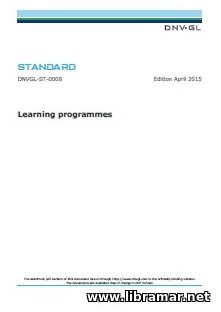 The primary and most important objectives of this DNV GL standard was to provide readers with listing and description of the requirements that are applicable to the learning programs including classroom training, electronic distance learning, CBT, i.e. computer-based training, simulator training, training on the job, and any mix of the above mentioned training modes and methods.
The ultimate intention of the present regulatory document was to make sure that the training courses that are certified as per this DNV GL standard are properly designed and that they comply in full with all applicable requirements with regard to their contents, that the objectives of these courses are clearly defined and that the training is delivered by duly qualified instructors. the booklet addresses both in-house and external types of training.
The authors of the document have divided it into five major chapters covering application of the standard, certification matters, training management, development and delivery of the training, assessment of the participants. There are two appendices supplementing the main body of the standard and providing informative references and the checklist for the self-assessment for the training providers.
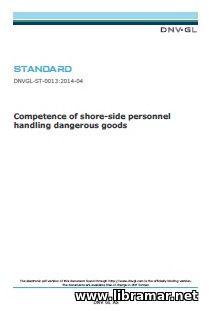 Here is another DNV GL standard - in this one the authors intend to focus on the shore-side personnel engaged in the marine transportation of various dangerous goods as described in the IMO IMDG Code.
In particular, the present official standard is specifying relevant competence requirements that have been covered in the IMO IMDG Code concerning the principles of classification of such goods, their packing and marking, placarding and labeling, packing/unpacking of cargo containers with the dangerous goods inside, preparing transportation documents for these goods, making decisions concerning offering/accepting of the various dangerous cargoes for transportation on board the ship, handling dangerous goods and preparing the loading and stowage plans, loading/unloading dangerous goods into or from the vessels, carrying dangerous cargoes in transport.
It shall be noted as necessary that national requirements that are applicable to the transportation of such sort of goods other than by sea, i.e. by road/railway/inland waterways have not beeт not addressed within the present document. Plus, it shall further be noted that this publication is primarily meant to specify competence requirements over and above those covered by any of the relevant requirements that are imposed by national and/or international legislation.
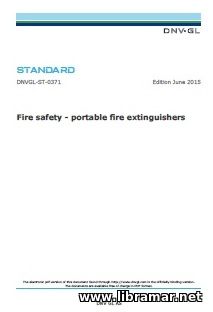 This document was specifically released to define the requirements of DNV GL classification society relating to the certification requirements as applicable to the portable fire extinguishers. The scheme of certification is primarily based on the type testing and assessment of the quality control system established at the factory, continuous quality control at manufacturer's and external inspection performed by the DNV GL professionals.
A certification license covers only portable fire extinguishers manufactured by one manufacturer at one location. The licensee carries the ultimate responsibility to ensure that the manufactured products are in full accordance with the licence. In addition, the Licensee must possess a system for record and handling of clients complaints and corrective actions. Should the licence get withdrawn or suspended, the licensee is obliged to pay all expenses in connection with replacement of the defective products by products conforming to the standard, if required. The certification licence is valid for a maximum of 5 years. A request for renewal must be sent to DNV GL no later than three months before the licence expires. A certification licence is not transferable.
The licensee must not make the products available on the market before the issuance date of the licence. The products may be manufactured before the licence issuance date only if a satisfactory initial audit has been carried out for the batch in question...
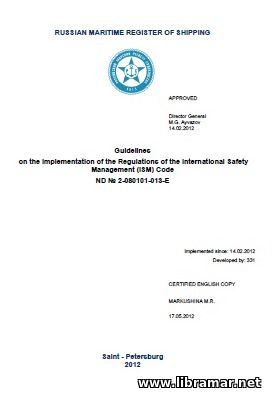 These Guidelines were prepared by the Russian Register specialists; they are providing auditors with necessary recommendations that must definitely be taken into consideration at the time of conducting the documentation review and the audits of the SMS of the Company/ship.
The arrangement of the publication is as follows - at the beginning the scope of application is described, while the next chapter of the Guidelines contains links to the relevant normative documents. This is all followed by the explanation of the terminology, definitions and abbreviations used throughout this document.
The main body of the publication contains guidance to for IACS auditors, minimum duration of the audit, companies and ships operated by owner, relationship between STCW and ISM Code, guidance on proper reporting of the near-misses, guide to managing maintenance as per the ISM Code requirements, checklist to be utilized for principal maintenance system management controls, guidance on the qualification and training, as well as minimum experience required to undertake the role of the Designated Person under ISM Code provisions, guide to the risk assessment in vessel operations, etc.
« 1 2 ... 4 5 6 7 8 ... 29 30 » |







